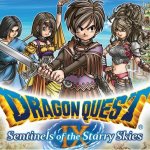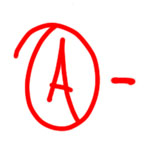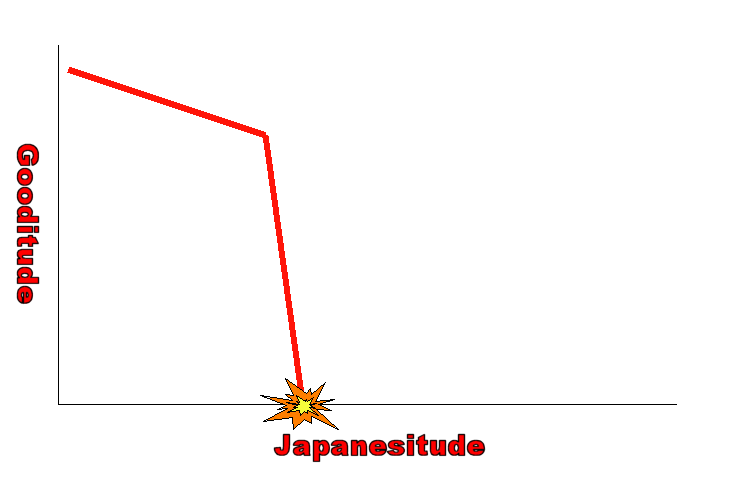
Final verdict: A-
Final playtime: 50 hours (ongoing post game)

Dragon Quest is one of those interesting examples of cultural differences between eastern and western games. Not in that “what the hell is wrong with them?” sort of way, that dating sims and wacky molestation adventure games are, but in a “what went wrong over here?” sort of way.
Predating Final Fantasy, released a year earlier in 1986, the Dragon Quest series is arguably the single most popular video game franchise in Japan – but is comparatively unheard of in the west, with Europe in particular not seeing any releases prior to Dragon Quest VIII on Playstation 2. Depending on your point of view, this either works in favour or against the series, as for the most part very little has changed from game to game, because hey they sell by the truckload in their native land.
The Dragon Quest series tends to be infamous for it’s brutally high levels of grind required to make your way through the game, and narratively tends to be somewhat lacking compared to its sister series, Final Fantasy; Dragon Quest IX is no exception. I’ll be the first to admit I was wary when I started playing DQIX, it’s no secret that I’m not generally a fan of Japanese RPGs, and the previous game burned me pretty bad. To this day Shepton and S.A.Renegade continue to try and persuade me to give SMT a try, but for the most part if a JRPG doesn’t have Mario as the main character I’m generally not interested. In fact, it has been a while since I’ve done so, but I have prepared a chart that expresses my feelings on the subject matter, showing the correlation between Gooditude and Japanesitude of an RPG:

And then someone said those 2 magic words:
“Character customisation”
I will play practically any game given to me if I can roll my own character; Phantasy Star Online and Final Fantasy Tactics especially are right up there, near the top of my all time favourite games, thanks in part to that very aspect. But this isn’t just any character customisation. This is customisation of your entire party. In an Akira Toriyama art style. With unnecessary periods at the end of my sentences to imply how serious I am at the expense of correct grammar. Colour me interested.
And so I set off to explore the world of Dragon Quest IX, with my ensemble cast of Toriyama characters, including myself, Crono, Vegeta and Shepton; who, little did he know, was going to spend the majority of the game wearing cat ears just so that he would be upset when he later proof read my review.
The basic premise of the game is that you are an angel, invisible to the common mortals, doing good deeds in an attempt to gain favour on behalf of all angel-kind so that you can all score points with the Big Guy up stairs so that he’ll invite you over to his parties and want to be BFFs with all of you guys. It’s all very whimsical and nothing could possibly go wrong. Until suddenly, something possibly goes wrong, and you are thrust into adventure to collect some magical doodads and kill a bunch of horrifically punny named enemies and bosses through out the land.
Everything in Dragon Quest IX, and indeed every other game in the series, feels like a throwback to 8 and 16-bit RPGs, and I mean that in the best possible way. The story isn’t overly angsty, the characters you meet don’t tend to be overused anime tropes, and best of all there’s a world map – something modern Japanese RPGs seem to have forgotten all about. The over world map is navigated at an angled overhead view, with enemies on the field that you can chase down or attempt to avoid to the best of your abilities, while towns and cities pull the camera in slightly for a more detailed view of your locale; and while admittedly a minor problem, wandering around in particularly geometrically heavy towns with a full party of 4 can sometimes result in brief periods of slowdown. The combat is displayed in the Dragon Quest standard first person view for the setup, and third person battle animations there after, with everything running in a pseudo turn based manner, with a slight degree of randomisation depending on how close in speed characters and enemies are.
Unfortunately, due to your ability to create your entire party, there’s even less dialogue than a standard Dragon Quest game, with very little character development. While this is partially overcome by your fairy sidekick, it does at times cause the game to feel a little Pokémon-esque, with your party silently walking from town to town, only to have to solve everyone else’s problems with little or no input.
The fun never stops in Dragon Quest IX, however, as there is a wealth of post game content available. Treasure maps provide players with randomised dungeons and loot, a wealth of quests and achievements for those 100% hungry players, and Nintendo periodically activating DLC quests via the Nintendo Wifi Connection. As well as this, players have the option of playing through adventures with a group of friends, or exchanging particularly lucrative treasure maps they’ve acquired through out their quest via local wireless play, which admittedly may or may not be completely useless depending on your location. While relatively easy to do such a thing in Japan, with people leaving their DS in sleep mode to “tag” map data, or looking for players to co-op with on the train, it is obviously a less common practice in the west. Gamestop in particular have been organising in-store events for the purpose of swapping data in the US, but while I can’t speak for the rest of Europe – little or no support for similar gatherings has been offered by any chains of stores in the UK.
With all that being said though, Dragon Quest IX is still a solid game, even without the multiplayer, and is a refreshing change of pace from the archetype filled doom and gloom of most modern JRPGs.
Final verdict: A-
Final playtime: 50 hours (ongoing post game)